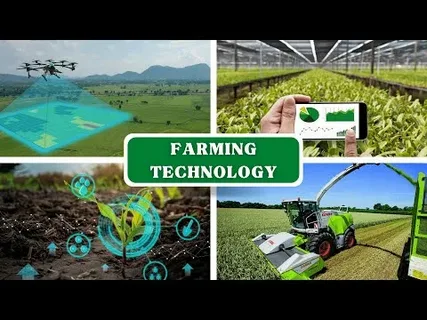Precision agriculture has revolutionized farming by enabling more efficient and sustainable practices. At the heart of this transformation are two powerful technologies: Big Data and the Internet of Things (IoT). Together, they provide farmers with critical insights and real-time data to optimize crop production, reduce waste, and enhance overall farm management.
Understanding Precision Agriculture
Precision agriculture refers to the use of advanced technology to monitor and manage variability in agricultural fields. By tailoring farming practices to specific conditions, farmers can improve crop yields while minimizing environmental impact. This approach relies heavily on accurate data collection and analysis, which is where Big Data and IoT come into play.
How Big Data and IoT Empower Modern Farming
Data Collection Through IoT Devices
IoT devices such as sensors, drones, and GPS systems are installed across farmland to gather real-time information on soil moisture, temperature, nutrient levels, and crop health. These devices continuously stream vast amounts of data, enabling farmers to monitor conditions closely without manual labor.
Analyzing Data with Big Data Technologies
The massive volume of data generated by IoT devices requires sophisticated Big Data analytics tools. These tools process and analyze complex datasets to identify patterns, trends, and anomalies. By doing so, farmers can make data-driven decisions, such as the optimal time for planting or irrigation scheduling.
The Role of Big Data and IoT in Advancing Precision Agriculture: Key Benefits
Enhanced Crop Monitoring and Management
The integration of Big Data and IoT enables precision agriculture to offer precise crop monitoring. Farmers can detect disease outbreaks early or identify nutrient deficiencies, allowing for timely intervention and reducing crop losses.
Resource Optimization and Sustainability
By using data-driven insights, farmers can optimize the use of water, fertilizers, and pesticides. This not only cuts costs but also promotes sustainable farming by reducing the environmental footprint.
Improved Yield and Profitability
Accurate data helps farmers improve yields by optimizing planting density, irrigation, and harvesting times. This results in increased profitability while ensuring better resource utilization.
Challenges and Future Outlook
While the role of Big Data and IoT in advancing precision agriculture is undeniable, challenges such as data security, high costs, and the need for technical expertise remain. However, as technology advances and becomes more accessible, these barriers are expected to diminish.
Conclusion
In conclusion, the role of Big Data and IoT in advancing precision agriculture is pivotal to the future of farming. These technologies enable farmers to harness the power of data for smarter, more efficient, and sustainable agricultural practices. As the global demand for food continues to rise, embracing Big Data and IoT will be essential in feeding the world while preserving natural resources.

